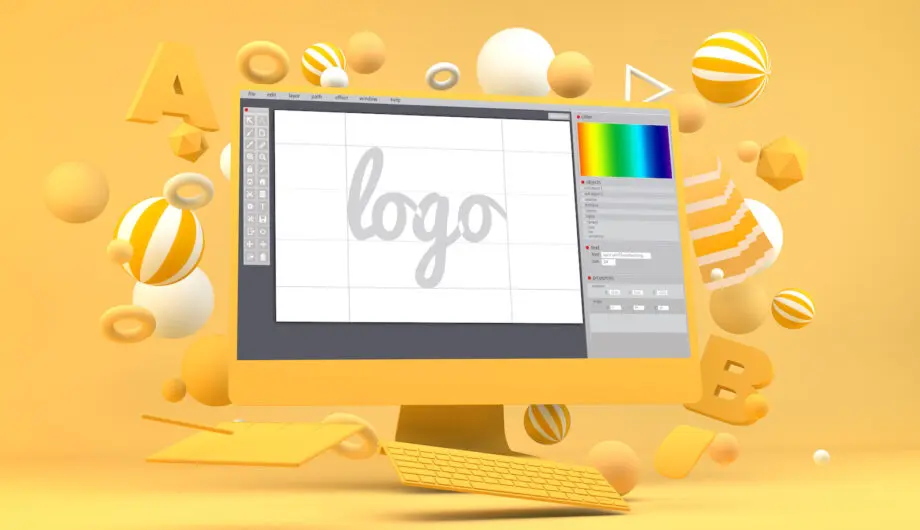
Your logo is often the first impression your brand makes on the world. It’s a visual representation of your identity, values, and what you stand for. With so much riding on this design, it’s easy to understand why logo creation can feel like a daunting task.
However, many common logo design mistakes can trip up even the most well-intentioned designers. By understanding these pitfalls and their solutions, you can ensure your logo effectively communicates your brand message and sets you up for long-term success.
Falling Prey to Trends
While staying somewhat current with design trends can be beneficial, basing your entire logo on a fad is a recipe for disaster. Trends come and go, but your logo should have lasting power. Aim for a timeless design that feels fresh and relevant without being overly trendy.
Solution: Instead of chasing fleeting trends, focus on creating a logo that aligns with your brand’s core values and resonates with your target audience. Draw inspiration from classic logos that have stood the test of time, and adapt them to your unique brand identity.
Getting Lost in Complexity
A logo overloaded with intricate details and excessive elements becomes difficult to understand and loses its impact, especially when reproduced at smaller sizes. Remember, your logo will be used on everything from business cards and websites to billboards and merchandise.
Solution: Embrace simplicity. Use clean lines, clear shapes, and a limited color palette to create a logo that is easy to read and remember, even at a glance.
Ignoring Color Psychology
Colors evoke emotions and have specific associations. Choosing colors that clash or don’t align with your brand message can send the wrong signal. For example, red is often associated with passion and excitement, while blue conveys trust and professionalism.
Solution: Research color psychology and choose colors that complement each other and effectively represent your brand’s personality. Consider your target audience and the emotions you want to evoke when selecting your color palette.
Neglecting Typography
The font you choose for your logo plays an important role in conveying your brand’s character. A playful font might be suitable for a toy store, but it wouldn’t be appropriate for a legal firm. And at all costs, please never use Comic Sans!
Solution: Select a font that is both visually appealing and reflects your brand’s essence. Avoid using overly decorative or difficult-to-read fonts. Opt for clean, legible fonts that complement your logo design and enhance its overall message. Remember your font needs to be able to be used over multiple mediums, and not all fonts are webfonts. Make sure you pick a font that works everywhere.
Forgetting About Scalability
Your logo will be used in various sizes and across different mediums. If your logo isn’t scalable, it will lose its crispness and visual integrity when reproduced at smaller sizes or on different backgrounds.
Solution: Design your logo using vector graphics software, allowing it to be scaled infinitely without losing quality. Ensure your logo looks good in both horizontal and vertical orientations, and test it on various backgrounds to guarantee its versatility.
Failing to Consider Copyright Issues
Using copyrighted elements in your logo can lead to legal trouble down the road. It’s important to ensure all the design elements in your logo are original or that you have the proper licensing agreements in place.
Solution: Conduct a thorough copyright search before finalizing your logo design. If you’re unsure about the copyright status of a particular element, consult with a legal professional to avoid potential infringement issues. Take note that most stock photos are not licensed for logos, so be sure you read the licensing rules very carefully to avoid an issue.
Neglecting User Testing
Your logo is meant to resonate with your target audience. However, sometimes designers get so caught up in the creative process that they forget to consider the end user’s perspective. You are not your customer. Your best friend and your mom are not your target audience. While it’s important that you like your logo, it’s more important that your audience likes it.
Solution: Gather feedback from your target audience through surveys, focus groups, or informal interviews. This valuable feedback can help you refine your logo design and ensure it effectively communicates with your intended audience.
Ignoring Accessibility
Not everyone has the same visual capabilities. It’s essential to ensure your logo is accessible to individuals with visual impairments. That grey text on a red background? That’s going to be super hard for someone with a color deficiency to see.
Solution: Use sufficient color contrast between your logo elements and background to ensure clear visibility. Avoid relying solely on color to convey meaning, as some individuals may not be able to perceive certain colors. Keep in mind that you should also be able to have your logo on a transparent background in some situations.
Skipping Brand Guidelines
A strong logo is just one element of your brand identity. To ensure consistent brand presentation, it’s vital to establish clear brand guidelines that outline how your logo should be used across different marketing materials.
Solution: Develop a brand style guide that specifies the logo’s various versions (e.g., primary logo, secondary logo, favicon), acceptable color variations, and any usage restrictions. This will ensure consistent brand application and prevent misuse of your logo.
Failing to Seek Professional Help
While DIY logo creation tools are readily available, navigating the intricacies of logo design can be challenging, especially for those without graphic design experience.
Solution: Consider seeking professional help from a graphic designer or branding agency like Sumy Designs. Need help? Contact us today for a quote!
Amy Masson
Amy is the co-owner, developer, and website strategist for Sumy Designs. She's been making websites with WordPress since 2006 and is passionate about making sure websites are as functional as they are beautiful.
